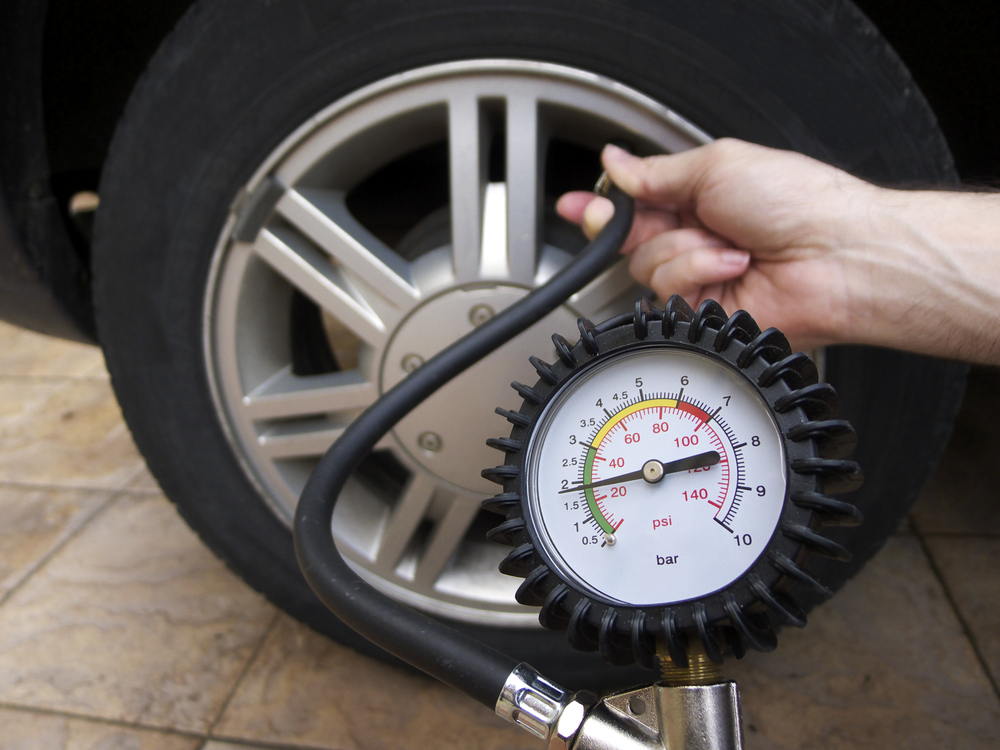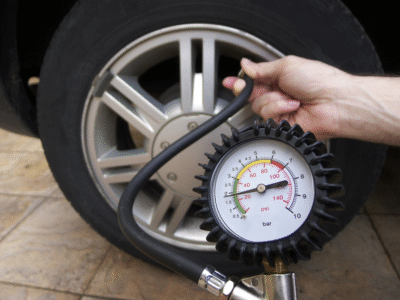
How to Reset the Tire Pressure System on Your Hyundai Tucson — Complete 2025 Guide

Maintaining the correct tire pressure in your Hyundai Tucson is essential for safety, fuel efficiency, and tire longevity. Your vehicle’s Tire Pressure Monitoring System (TPMS) constantly checks air pressure levels, and when adjustments are made, the system may need to be reset or recalibrated. This detailed guide explains how to reset the TPMS, recalibrate the system, and troubleshoot common issues across Hyundai Tucson models from 2015 to 2025.
Why You Might Need to Reset the TPMS
Resetting the TPMS becomes necessary in several situations:
- After inflating or deflating your tires to the correct pressure.
- Following a tire rotation, wheel replacement, or seasonal tire change.
- When the TPMS warning light remains on after correcting pressure.
- After a drop in ambient temperature that causes pressure fluctuations.
- When the system fails to auto-relearn after maintenance.
Recommended Tire Pressure for Hyundai Tucson
For most model years (2015–2025), the ideal tire pressure is approximately 32 psi (2.2 bar) for all four tires. Always check the exact value on the tire-information sticker located on the driver-side door jamb.
Use a reliable gauge and measure the pressure when the tires are cold for the most accurate reading.
Two Primary TPMS Reset Methods
- Park the vehicle on a flat surface and turn off the engine.
- Adjust all four tires to the correct pressure.
- Turn the ignition key to the “ON” position without starting the engine.
- Locate the TPMS Reset button under the steering column or near the driver-side fuse box.
- Press and hold the button for about 3–5 seconds, until the TPMS light blinks three times.
- Start the engine and drive at 30–50 mph (50–80 km/h) for 10–20 minutes.
- Verify that the TPMS warning light turns off.
Method B – Automatic Relearn (Newer Models 2022–2025)
Recent Hyundai Tucson models use an automatic relearn system:
- Inflate all tires to the specified pressure.
- Start the engine.
- Drive at moderate speeds (30–50 mph) for 10–20 minutes.
- The TPMS automatically registers and resets the updated pressure.
- If available, you can also perform a reset through the infotainment screen under Vehicle Settings → TPMS Reset.
Step-by-Step Walkthrough
Step 1 – Check Tire Pressures
Use a trusted tire pressure gauge to check all four tires, including the spare. Adjust as needed to match the specifications on the driver’s door label.
Do this when tires are cold; driving heats the air inside and gives false readings.
 Hyundai Tucson Tire Size Guide: Complete Reference for All Model Years
Hyundai Tucson Tire Size Guide: Complete Reference for All Model YearsThe button is usually positioned:
- Under the steering column.
- Near the left-side fuse box.
- On the lower dash close to the driver’s knee area.
Step 3 – Perform the Reset
Follow Method A or Method B based on your Tucson model. The light should blink during the reset, confirming the process has started.
Step 4 – Confirm the Light Is Off
After completing the reset or auto-relearn, check that the TPMS warning light disappears. If it remains on:
- Recheck each tire’s pressure.
- Drive for an additional 10–20 minutes.
- If it still stays lit, there may be a sensor malfunction or system fault.
Step 5 – For Second Wheel Sets or Winter Tires
When using alternate wheels:
- Ensure the new wheels include compatible TPMS sensors.
- Inflate all tires properly.
- Drive for 10–20 minutes to allow the system to relearn the sensors.
- If the light remains on, a manual reset or dealer recalibration may be required.
Common Issues and Fixes
1. TPMS Light Stays On After Correct Inflation
Cause: Faulty or dead sensor, incorrect frequency, or damaged wiring.
Fix: Have a technician scan the system with a TPMS diagnostic tool to identify the faulty component.
 Hyundai Tucson Tire Size Guide: Complete Reference for All Model Years
Hyundai Tucson Tire Size Guide: Complete Reference for All Model Years Why Does My Hyundai Tucson Say “ADS Off”? | Complete 2025 Guide to ADAS Warnings
Why Does My Hyundai Tucson Say “ADS Off”? | Complete 2025 Guide to ADAS Warnings2. Warning Appears After Wheel or Tire Change
Cause: The new wheels or tires have sensors that need to be paired.
Fix: Drive continuously for about 20 minutes at moderate speed. If the warning persists, verify sensor compatibility (433 MHz or 315 MHz).
3. Low Temperature Triggering the Warning
Cause: Cold weather reduces tire pressure naturally.
Fix: Inflate tires to the recommended pressure when cold and perform a reset or auto-relearn.
Cause: Newer Tucson models use digital menus instead of a physical button.
Fix: Navigate to Settings → Vehicle → TPMS → Reset on your infotainment screen, then drive to complete the recalibration.
Why Maintaining Correct Tire Pressure Is Critical
Keeping your tires properly inflated offers multiple benefits:
- Improved fuel efficiency — reduces rolling resistance.
- Longer tire life — prevents uneven tread wear.
- Enhanced handling and braking — ensures stability.
- Safety — minimizes the risk of blowouts from under-inflated tires.
Incorrect pressure doesn’t just affect comfort; it can compromise the entire vehicle’s performance and safety.
You may be interested in reading Hyundai Tucson Tire Size Guide: Complete Reference for All Model Years
Hyundai Tucson Tire Size Guide: Complete Reference for All Model Years Why Does My Hyundai Tucson Say “ADS Off”? | Complete 2025 Guide to ADAS Warnings
Why Does My Hyundai Tucson Say “ADS Off”? | Complete 2025 Guide to ADAS Warnings Hyundai Tucson Engine Size: Complete 2025 Guide
Hyundai Tucson Engine Size: Complete 2025 GuideQuick Troubleshooting Reference
| Problem | Likely Cause | Recommended Action |
|---|---|---|
| TPMS light won’t go off | Incorrect pressure or slow sensor response | Drive for 10–20 min after reset |
| Flashing TPMS light | Sensor fault or low battery | Scan TPMS and replace faulty sensor |
| Warning after tire swap | Unrecognized sensors | Install compatible TPMS sensors |
| Light returns after cold nights | Air pressure drop from temperature | Recheck pressure and reset system |
Pro Tips for Maintaining the TPMS
- Check tire pressure monthly or before long trips.
- Always measure pressure when tires are cold.
- Rotate tires regularly to prevent uneven wear.
- Replace TPMS sensor batteries every 5–7 years if not sealed units.
- If the warning persists even after resets, schedule professional service.
Conclusion
Resetting the TPMS on your Hyundai Tucson ensures accurate tire monitoring and sustained performance. Whether your model uses a manual reset button or an automatic relearn system, following these steps restores the system’s accuracy and prevents false alerts. Maintaining proper tire pressure enhances safety, saves fuel, and extends the life of your tires — giving your Tucson the smooth, efficient drive it was engineered for.
Final Note
If the TPMS light continues to appear, it could indicate a deeper issue such as a faulty sensor or receiver module. Consult a certified Hyundai technician to perform a diagnostic scan and ensure your system operates flawlessly.
If you want to know other articles similar to How to Reset the Tire Pressure System on Your Hyundai Tucson — Complete 2025 Guide you can visit the category Service and Parts.
Deja una respuesta






More content of your interest